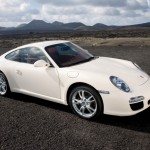 I recently had the chance to drive the new 2009 Porsche 997 with PDK (courtesy of my local dealer) and was all set to write up a review for your reading pleasure. Then, out of the blue, I received an email from a long-term reader and frequent contributor (Porsche Girl) that a close friend of hers (who also happens to be the Chief PCA instructor for his region and an avid racer) was interested in contributing a review. I said sure! Not only did it get me out of writing, but what could be better than having someone who has more track time with a Porsche – than I have normal driving – write the review. So, without further ado, here are Christian M. Maloof’s thoughts on the new 997 with PDK…
I recently had the chance to drive the new 2009 Porsche 997 with PDK (courtesy of my local dealer) and was all set to write up a review for your reading pleasure. Then, out of the blue, I received an email from a long-term reader and frequent contributor (Porsche Girl) that a close friend of hers (who also happens to be the Chief PCA instructor for his region and an avid racer) was interested in contributing a review. I said sure! Not only did it get me out of writing, but what could be better than having someone who has more track time with a Porsche – than I have normal driving – write the review. So, without further ado, here are Christian M. Maloof’s thoughts on the new 997 with PDK…
After hearing that it would be months before my area would see the new 2009 Porsche 997, I was pleasantly surprised to hear that our local dealer* received not one but two new Carreras: a base model and a 4S. Both cars arrived with the new PDK (Porsche Doppelkupplung) transmission, which I was curious to try.
My opportunity to test drive the base model presented itself in the form of a Carrara White couple with a base Stone Grey interior. This car’s engine produces 345 horsepower (aided by direct fuel injection, also a new feature). The folks at Porsche tell us that the new 997 takes 4.5 seconds to get from 0-60. Notably, this is the first year that the model with automatic transmission gets from 0-60 mph faster than the manual. The car’s top track speed is 180 mph.
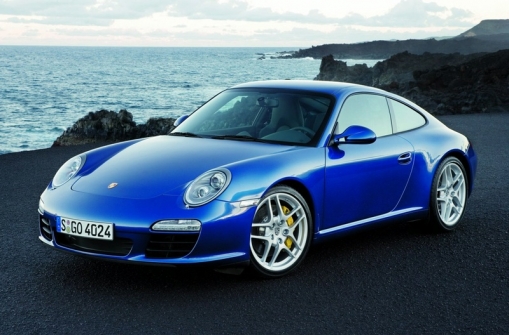
At first look, the new 997 appears distinguished and elegant. The front end flows very nicely; its lines are generally clean and reminiscent of earlier 911s, in particular the 993 generation, but its increasing size is not well hidden. While generally pleased with the exterior of the car, I couldn’t help but feel that the nose seems somewhat disproportionate to the girth of the mid section and rear end. However, I am quite fond of the new LED headlamps and the red strip between the taillights in particular (probably because they hearken back to the heyday of 993 design). In choosing these, Porsche has beautifully married modernity and tradition.
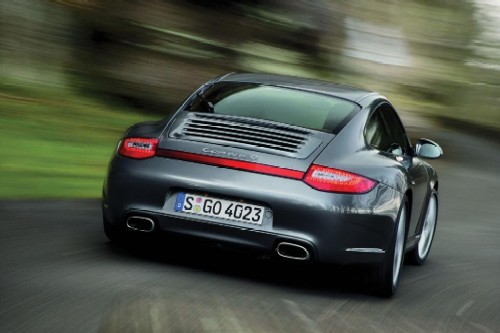
Climbing inside, I found the fit and finish of the car quite impressive. The interior is very visually appealing, full of soft corners and handbag-quality stitching. The redesigned seats feel more comfortable and ergonomic, adding to overall driver comfort. Technological improvements include a redesigned and more intuitive navigation touch screen, Bluetooth capability and—finally!—iPod integration. However, the SIM card slot is a tease: it does not work in U.S. models, only European ones. When it does start working, it enables you to insert your phone’s SIM card, download your phone book, and effectively turn your Porsche into a $76,000 “mobile” phone.
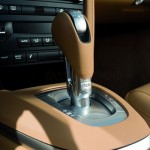 While the overall interior is nice, a couple of things did not impress me as much. Notably, the plastic shield surrounding the PDK “stick shift,” which unfortunately reminds me of being in a Volvo! In an interior so luxurious and harmonious, the plastic looks cheap and out of place. Secondly, the steering wheel is now almost comically large; accommodating an air bag and the PDK shifters probably didn’t help. Such a crucial part of the driving experience should not feel uncomfortable, and this one does.
While the overall interior is nice, a couple of things did not impress me as much. Notably, the plastic shield surrounding the PDK “stick shift,” which unfortunately reminds me of being in a Volvo! In an interior so luxurious and harmonious, the plastic looks cheap and out of place. Secondly, the steering wheel is now almost comically large; accommodating an air bag and the PDK shifters probably didn’t help. Such a crucial part of the driving experience should not feel uncomfortable, and this one does.
Now for the most important part of the Porsche: the ride.
Ride quality on the 997 is fantastic. Throughout, the engine feels great; the torque band is best described as beautiful and very linear. Aurally, however, the Carrera is a bit light in the loafers, offering much less bark than older 911s.
The standard 18” Carrera IV wheels with Michelin Pilot Sport II tires were compliant but still sticky, even on our bumpy Michigan roads. Compared to the ’08 S-model with 19-in wheels, the front end seems just a little vague. Overall, however, the suspension is improved over the ’08 Carreras because (as Randy Pobst is fond of saying) it is “firm but it has the cush.”
The shock package, too, shows improvement. It is, as Porsche says, “light, stable and agile.” Along with advancements in the suspension, the variable power steering has succeeded in making the car feel a bit lighter than it is, another improvement for those that use their Porsche to commute. I felt this particular car could absolutely be a very enjoyable daily driver, especially if you routinely experience periods of traffic interrupting on-ramps and country roads.
To properly experience the new 997, I disabled the PSM as soon as we entered a more twisty segment of roads. The move did not go unnoticed by my tolerant salesman, who laughed nervously. As I made more demands of the Carrera, the car showed minimal body roll, clean predictable turn-ins, and (in normal driving conditions) zero trailing throttle oversteer (once the nemesis of all 911s) As it turned out there was no need for his concern. When pushed harder, the rear-end gently “pointed” the front where I wanted to go. The brakes are stellar, just as I have to come to expect from Porsche. I did not have the chance to drive the car on the race track, but I suspect it would easy to drive, offering plenty of a “driving experience.”
The biggest change to the new 997s is the much-anticipated introduction of the PDK
This car may be the best automatic I have ever driven. Overall, the PDK is a vast improvement over the Tiptronic. You can feel the blip of the throttle through the chassis but not through the drivetrain. Downshifts are clean and precise, but upshifts felt a bit lazy compared to a manual transmission, especially if the driver is looking for more “umph.” We were unable to try a car with the Sport Chrono Package, which would have offered PDK in sport mode. This option apparently provides more aggressive shifting to satisfy those yearning for more response. (The extra spiritedness will set you back approximately $4,000).
Do I think PDK will make the car an even more comfortable ride for most? Absolutely. Would I purchase a Porsche with a PDK gearbox? Probably not. Regardless of how unarguably great the new PDK system is, it is impossible for it to approximate the feel and feedback of the clutch and gearbox, and how they connect the driver to the car’s engine.
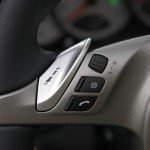 One aspect of PDK I did not enjoy was the user interface. The steering-wheel mounted shifting paddles appear game like and are not intuitive. They require the driver to pull toward him/herself for downshifts and push forward to upshift, which seemed unnatural. All other sports cars with automatic shift transmissions I have driven (race or street) have dedicated shifting paddles: right for upshift, left for down. Thankfully there is very little room for error, as the PDK won’t let you downshift from the top of third gear to second, no matter how many times you try (and I tried a few times). Other reviews have said much about the need to re-design the steering wheel interface, and I hope Porsche listens.
One aspect of PDK I did not enjoy was the user interface. The steering-wheel mounted shifting paddles appear game like and are not intuitive. They require the driver to pull toward him/herself for downshifts and push forward to upshift, which seemed unnatural. All other sports cars with automatic shift transmissions I have driven (race or street) have dedicated shifting paddles: right for upshift, left for down. Thankfully there is very little room for error, as the PDK won’t let you downshift from the top of third gear to second, no matter how many times you try (and I tried a few times). Other reviews have said much about the need to re-design the steering wheel interface, and I hope Porsche listens.
Overall, Porsche has succeeded in creating a sports car that is perfectly well suited to commuting while retaining its racing heritage. The new 997 is ultra comfortable and modern, yet fun and aggressive when need be. There is plenty of diversification among the 997 line so just about everyone can find the Porsche that works for them, be it one with Alcantara cooled seats and heated steering wheel or a track ready GT3.
*Special thanks to Eric Gedeon of Howard Cooper Porsche, Ann Arbor
Christian M. Maloof is Track Chairman and Chief Instructor for Porsche Club of America’s Rally Sport Region. He holds instructor certificates and race licenses from the MidOhio School and Skip Barber. He races a Porsche 993 3.8 RS in the German Touring Car Series (GTS) division with NASA. He may be reached at christianmaloof at hotmail.com.
Related Posts
2009 Porsche Carrera 4 and 4S Unveiled
Porsche 911 with Direct Fuel Injection and PDK
Porsche Introduces 2009 Cayenne and Boxster
Porsche PDK Explained
Porsche 962 and PDK